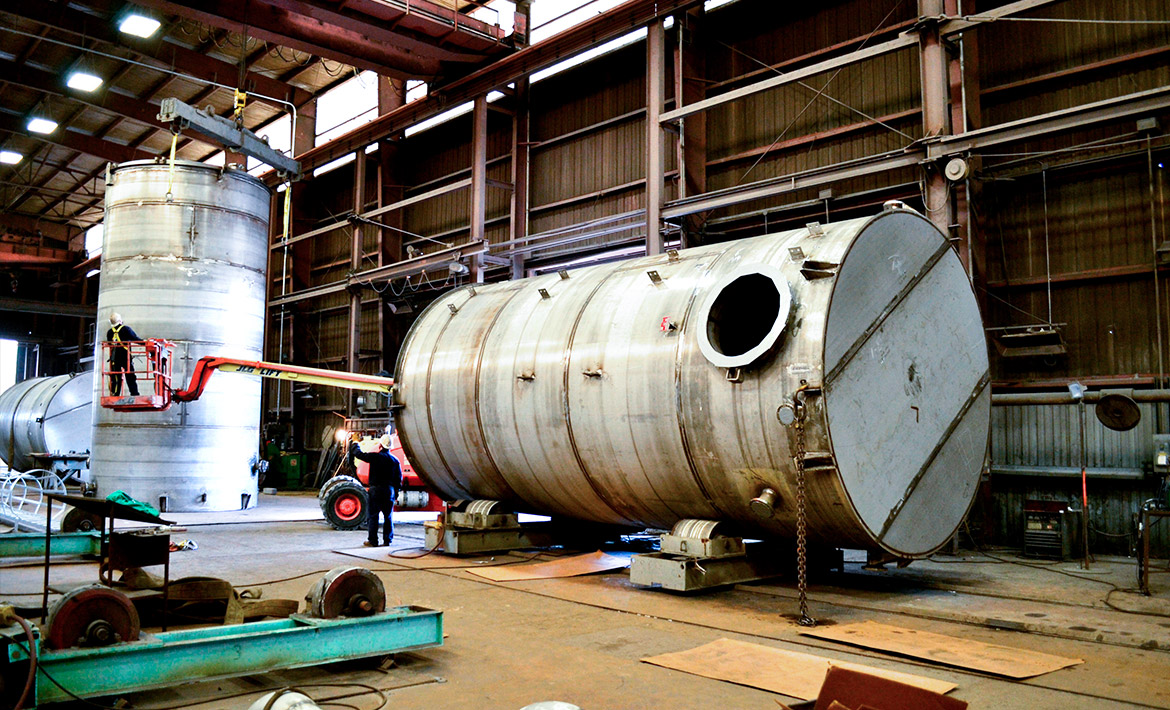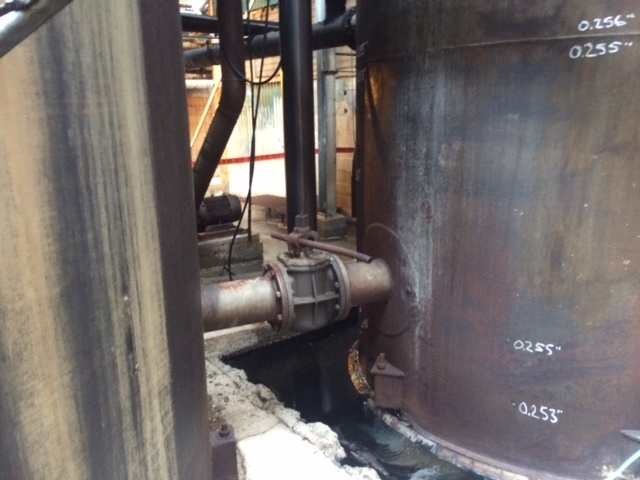A Detailed Take A Look At the Setup Process of Welding Examination Techniques
Welding inspection is a crucial procedure that guarantees architectural stability and safety. The installation of evaluation strategies includes numerous systematic steps, each important to accomplishing reliable results. From preparation and tool selection to carrying out non-destructive and visual examinations, each phase demands cautious focus. Comprehending these procedures can considerably boost top quality guarantee in welding projects. What obstacles develop in implementing these strategies, and just how can they be efficiently addressed?
Understanding the Value of Welding Examination
Welding inspection is an essential component of ensuring architectural integrity and security in building and construction and production procedures. This method involves examining bonded joints for problems, ensuring that they meet particular requirements and guidelines. By methodically assessing weld high quality, inspectors can determine problems such as fractures, voids, and incomplete combination, which can jeopardize the strength and resilience of structures.
The significance of welding evaluation prolongs beyond instant security worries; it assists avoid expensive failures and possible threats in the lengthy term. Effective assessment methods foster conformity with sector standards, thereby enhancing the overall integrity of bonded elements. In enhancement, a robust assessment procedure adds to keeping the reputation of contractors and makers, as it guarantees clients of the quality of their jobs. Inevitably, recognizing the importance of welding inspection is important for promoting secure building techniques and guaranteeing the durability of essential framework and items.
Selecting the Right Tools for Assessment
When selecting the proper tools for inspection, it is necessary to ponder the specific demands of the welding process and the products included. Different assessment approaches, such as visual, ultrasonic, and radiographic screening, require distinctive devices customized to their one-of-a-kind demands. For aesthetic evaluations, devices like magnifying calipers and glasses are vital for assessing weld high quality. Ultrasonic screening calls for specialized devices efficient in transferring and receiving acoustic waves to find interior imperfections. Radiographic testing, on the other hand, utilizes X-ray or gamma-ray resources alongside delicate movie or digital detectors to expose inconsistencies.
Furthermore, individual protective devices (PPE) is vital to ensure the safety and security of examiners during evaluations. Picking the right tools not just enhances the accuracy of assessments however additionally adds to the total stability and safety and security of the welding task. A comprehensive understanding of offered devices and their applications is vital for effective welding assessment.
Preparing for the Examination Refine
Before initiating the inspection process, it is vital to establish a thorough plan that lays out the range and goals of the assessment. This plan must consist of details criteria that specify what comprises appropriate high quality in the welding job being checked. Identifying the appropriate codes and standards is crucial, as they will certainly lead the inspection standards and approaches.
In addition, employees entailed in the inspection must be effectively educated and certified in welding assessment techniques to guarantee integrity and precision. A checklist can be advantageous in arranging the numerous aspects of the assessment, varying from devices preparedness to ecological problems that might impact the evaluation.

Logistical considerations such as scheduling, readily available resources, and communication in between team participants need to be resolved. By preparing systematically, examiners can enhance the efficiency of the examination and make sure that all vital variables are appropriately taken into consideration before proceeding with the inspection itself.
Conducting Visual Inspections

Carrying out aesthetic assessments is an important action in the welding examination procedure, calling for careful prep work to ensure efficient analysis. Inspectors should recognize with key issue indications that can indicate possible problems in weld high quality. By concentrating on these elements, one can boost the overall reliability of the examination results.
Getting Ready For Visual Inspection
Aesthetic inspection serves as a critical initial step in the welding examination procedure, guaranteeing that any type of prospective issues are identified early (API 650 Welding Inspection). Proper preparation is necessary for efficient aesthetic examination. Inspectors should start by evaluating relevant documents, including welding treatments and specifications, to recognize the task needs. They must collect necessary tools, such as magnifying glasses, flashlights, and proper individual safety tools (PPE) An extensive assessment of the evaluation location is vital; assessors should validate it is totally free and clean of blockages. In addition, it is essential to establish excellent lighting conditions to improve visibility of welds. By taking these primary actions, examiners can create a setting for identifying disparities and assuring the integrity of the welded structures
Key Flaw Indicators
A comprehensive understanding of essential flaw signs is necessary throughout visual evaluations to assure the high quality and security of bonded joints. Inspectors should concentrate on specific signs such as cracks, porosity, damages, and insufficient blend. Cracks might look like sharp lines and can compromise structural integrity. Porosity materializes as little openings that can damage weld stamina. Undercuts, which are grooves along the weld edge, can cause stress concentration. Insufficient fusion suggests that the weld metal did not correctly bond with the base product, causing a weak joint. By methodically identifying these defects, assessors can ascertain conformity with industry standards and boost the total integrity of bonded structures, ultimately adding to safer functional conditions.
Executing Non-Destructive Testing Strategies

Various non-destructive testing (NDT) methods are important to ensuring the stability of bonded frameworks without endangering their performance. These methods permit inspectors to review weld top quality and detect defects without triggering damages to the products being evaluated. Typical NDT techniques consist of ultrasonic screening, radiographic testing, magnetic fragment screening, and color penetrant screening. Each approach serves a details objective, resolving various kinds of imperfections such as cracks, porosity, or incomplete blend.
Executing NDT strategies calls for a methodical technique, starting with selecting the appropriate approach based on the products and the nature of the weld. Educating employees in these methods is essential for accurate outcomes. Additionally, developing clear procedures and standards warranties consistency throughout the evaluation process. By integrating NDT into the welding inspection process, companies can enhance the integrity of their products while lessening potential dangers connected with structural failings. This aggressive method inevitably adds to maintaining security and top quality requirements in welded building and constructions.
Assessing and documenting Inspection Results
Effective paperwork and analysis of assessment outcomes are important elements of the welding evaluation procedure. Exact documents of inspection searchings for work as a referral for quality control and compliance with sector standards. API 650 Welding Inspection. Inspectors must use organized types or electronic platforms to log information such as like this the type of weld, assessment techniques employed, and any kind of inconsistencies identified throughout the examination
Once information is gathered, thorough evaluation is important. This involves comparing outcomes versus developed standards to Extra resources recognize fads or repeating issues. Statistical devices may be utilized to evaluate problems and examine their influence on overall weld top quality.
Reliable communication of searchings for to pertinent stakeholders is vital. Reports and summaries need to be clear and concise, highlighting crucial understandings and referrals for restorative actions. By methodically analyzing and documenting assessment outcomes, companies can cultivate continual renovation in welding practices and improve product stability.
Often Asked Concerns
What Credentials Are Required to Become a Welding Inspector?
To end up being a welding examiner, one commonly requires relevant accreditations such as AWS CWI, together with experience in welding techniques, expertise of welding codes, and proficiency in evaluation strategies to guarantee high quality and safety and security standards.
How Usually Should Welding Inspections Be Performed?
Welding evaluations should be conducted frequently, typically after each weld is finished, and occasionally throughout projects. Variables such as job complexity, sector standards, and regulative needs can influence the regularity of these inspections.
What Is the Expense of Welding Assessment Services?
The expense of welding assessment solutions differs substantially based on factors such as task size, area, and complexity. Typically, prices range from $100 to $150 per hour, with extra charges for specialized screening and certifications.
Are There Certifications for Welding Inspectors?
Yes, there are different certifications for welding inspectors, consisting of those provided by the American Welding Society (AWS) and the International Institute of Welding (IIW) These accreditations ensure inspectors have the needed abilities and knowledge for reliable evaluations.

Just how Do I Select an Inspection Provider?
To pick an evaluation service copyright, one should examine qualifications, experience, sector reputation, and customer evaluations. Furthermore, contrasting service offerings and pricing can aid ensure the picked supplier satisfies particular job needs successfully.
In addition, workers involved in the evaluation link needs to be sufficiently trained and licensed in welding assessment methods to ensure dependability and precision. Performing aesthetic evaluations is a crucial step in the welding inspection process, calling for mindful preparation to ensure efficient evaluation. Aesthetic assessment offers as a vital very first action in the welding examination procedure, assuring that any possible issues are determined early. Effective documents and evaluation of examination results are essential parts of the welding evaluation process. Welding inspections must be performed routinely, typically after each weld is finished, and periodically during jobs.